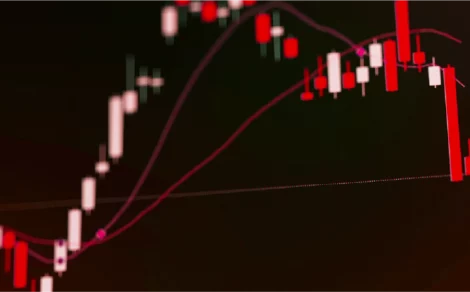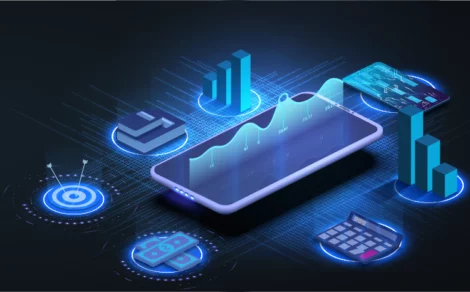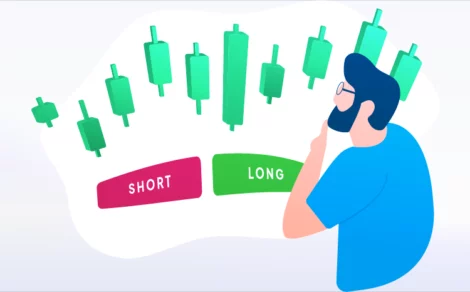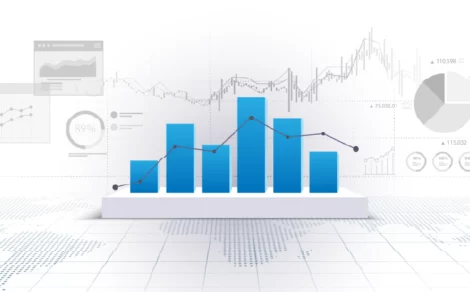Toruscope » Online Trading » Introduction to Quantitative Trading
Success in stock trading depends on data-driven decisions, not instincts. However, the vast amount of complex data, the evolving nature of the market, and constant volatility make it difficult for you as a trader to analyse all the information simultaneously and execute trades effectively. This is where quantitative trading comes in.
What is Quantitative Trading?
Quantitative trading is a method where you use mathematical models and data analysis to make trading decisions. Instead of relying on your emotions or market rumours, you follow a strategy based on numbers, statistics, and historical patterns. You write computer programmes or use software to spot opportunities and execute trades automatically. This approach helps you avoid emotional bias and stick to a proven plan.
How Quantitative Trading Works?
Quantitative trading is a method in which mathematical models and data analysis are used to make trading decisions. Here is an example of how it works.
Suppose you notice that whenever there is a rise in the gold price, stocks that are related to the yellow metal, say a gold mining company stock, go up shortly after. Instead of any guesswork, you decide to test this correlation.
You collect years of price data for both gold and the stock. Then, you use software or coding tools to run calculations. You build a trading strategy that says, ‘If gold rises by 2% in a day, buy the stock and sell it after 3 days.’ You perform backtesting on past data. If the results look promising, you are ready to go live.
Now, instead of manually watching the market, you let a computer do the trading. Your algorithm checks real-time prices and automatically places trades when the conditions are met.
What are the Advantages of Quantitative Trading?
Now that you know the quantitative trading meaning, here are some perks of using this method:
-
Emotion-Free Decisions
Greed and fear are emotional biases that can compel you to make panic-driven decisions, especially during market volatility. The result? Most of the time, you end up placing a losing trade. Quantitative trading strictly follows pre-set mathematical models based on data, not hunches. It helps you stick to the tested strategy even in high-pressure market situations.
-
Efficient Diversification
You can trade across multiple markets, instruments, and strategies simultaneously. This improves diversification and spreads your risk effectively. Unlike manual trading, where you can only focus on a few assets, quant systems let you scale up and manage exposure with precision.
-
24/7 Market Monitoring
You don’t have to stay glued to your screen. Your algorithm monitors markets continuously, even when you sleep. This is especially useful in global or crypto markets that run around the clock. You never miss out on opportunities due to time zones or fatigue.
-
Handles Large Data
You can process and analyse substantial amounts of market data that humans can’t handle manually. Quantitative models can scan thousands of stocks or instruments simultaneously, helping you identify hidden patterns and opportunities that are invisible through traditional trading methods.
-
Higher Accuracy
In quantitative trading, computer algorithms handle the entire process without manual intervention. This eliminates the risk of human error. Simply put, automation improves the precision of each transaction and contributes to improved profitability in the long run.
What are the Disadvantages of Quantitative Trading?
Quantitative trading is not without downsides; here are some:
-
Overfitting to Past Data
You might build a model that performs brilliantly on historical data but fails in live trading. This happens when you fine-tune it too much to past market conditions, capturing noise instead of real patterns. As a result, your strategy may collapse when future data deviates even slightly from the backtest period.
-
Crowded Trades
When many firms use similar quantitative signals, you end up in crowded trades. These positions can unwind quickly if market sentiment turns, triggering sharp price movements. You may suffer large losses simply because too many models like yours were chasing the same opportunity at the same time.
-
Infrastructure Cost
High-quality data feeds, low-latency infrastructure, and reliable backtesting platforms are expensive. You need constant upgrades to remain competitive. These costs can be a major burden, especially if your strategy’s edge is small. If you are not making regular profits, you may find it hard to recover your ongoing tech expenses.
-
Black Swan Events
Quantitative models generally operate within a defined range of inputs. When an unexpected event like a financial crisis, war, or pandemic hits, your model won’t know how to react. It may continue executing trades based on outdated assumptions, which will ultimately multiply your losses.
-
Dependency on Technology
Quantitative trading relies heavily on stable Internet, fast servers, low-latency networks, and reliable data feeds. If any component fails, even briefly, your trading logic can misfire, resulting in losses. There is no room for human correction in real time.
Key Components of Quantitative Trading
The key components of quantitative trading include the following:
-
Data Collection
The process starts with collecting real-time data, such as price, volume, order book depth, and economic indicators. Quantitative trading also uses alternative data as social media sentiment.
-
Data Cleaning
When the data is fed into the model, it is raw and contains missing values, errors, or noise that can distort the analysis. Data cleaning involves removing outliers, adjusting for corporate actions (like splits or dividends), filling missing values, and aligning timestamps.
-
Alpha Generation (Strategy Design)
In this step, the model identifies patterns or signals for consistent risk-adjusted returns that outperform benchmarks. The process involves statistical methods, machine learning models, or rule-based logic to design strategies like momentum, mean reversion, or arbitrage.
-
Backtesting
Next, the model tests a trading strategy using historical data to evaluate its performance. It helps verify whether the strategy would have been profitable in the past.
-
Risk Management
Risk management controls potential losses by defining limits for exposure, volatility, drawdowns, and position sizing. Techniques like Value at Risk (VaR), stop-loss, or portfolio diversification are used.
-
Execution Systems
An execution system efficiently converts strategy signals into real trades in the market. It aims to reduce trading costs such as slippage and market impact. Execution may involve smart order routing, algorithmic execution, like VWAP or TWAP, and real-time feedback loops to adapt orders to liquidity conditions.
-
Portfolio Construction
At this stage, capital is allocated across multiple strategies or assets to balance risk and return. Techniques include risk parity, mean-variance optimisation, and factor-based allocation.
-
Infrastructure and Technology
A reliable infrastructure supports data storage, model computation, and low-latency execution without downtime or bottlenecks. It includes high-speed internet, cloud computing, APIs, databases, and real-time data feeds.
Conclusion
Quantitative trading combines data, technology, and strategy to automate decisions and reduce emotional bias. Using models, backtesting, and advanced infrastructure helps you trade efficiently and at scale. While it offers key advantages like diversification and 24/7 monitoring, challenges like overfitting, tech dependency, and high costs must be managed carefully for long-term success.
Yet to start your investment journey? Visit Torus Digital and open a free Demat Account first.
Related Reads
What is Slippage in Trading? Meaning, Causes & Impact Explained
In trading, timing and precision often define success. However, even when a trader believes...
By: torus
- 7 mins
- 01.Jul.2025
- 4(1)
- 96
What is an Option Contract?
Imagine having the flexibility to buy or sell shares at a fixed price, no...
By: torus
- 7 mins
- 01.Jul.2025
- 0(0)
- 43
Types of Financial Instruments You Should Know Before Investing
Before investing funds in any market, it is essential to understand what financial instruments...
By: torus
- 7 mins
- 01.Jul.2025
- 0(0)
- 39
What are Contracts for Difference (CFD)?
Contracts for Difference, commonly known as CFDs, are financial instruments that allow traders to...
By: torus
- 9 mins
- 01.Jul.2025
- 0(0)
- 39
Difference between Short Position & Long Position
Understanding the concepts of short and long positions is essential for anyone interested in...
By: torus
- 8 mins
- 01.Jul.2025
- 0(0)
- 38
Essential Trading Terminologies You Need to Know
Trading in financial markets opens a world full of opportunities. For many first-time investors,...
By: torus
- 8 mins
- 01.Jul.2025
- 0(0)
- 47
Disclaimer: The content provided in this blog is for informational purposes only and does not constitute financial advice or recommendations. The content may be subject to change and revision. Readers are encouraged to conduct their own research and consult with a qualified financial advisor before making any investment decisions. Torus Digital and its affiliates takes no guarantees whatsoever as to its completeness, correctness or accuracy since these details may be acquired from third party and we will not be responsible for any direct or indirect losses or liabilities incurred from actions taken based on the information provided herein. For more details, please visit www.torusdigital.com.
Tenneco Clean Air IPO Listing: Strong Market Debut with 27% Premium
Tenneco Clean Air India Ltd made a confident entrance into the public markets on...
By: torus
- 5 mins
- 19.Nov.2025
-
3.7(6)
-
114
Stock to Buy Today: November 19, 2025
The Indian stock market witnessed a mild decline on November 18, 2025, ending a...
By: torus
- 4 mins
- 19.Nov.2025
-
4.3(3)
-
114
Mirae Asset Infrastructure Fund NFO: A Sector-Focused Bet on India’s Growth
Mirae Asset Mutual Fund has launched a new equity scheme — Mirae Asset Infrastructure...
By: torus
- 4 mins
- 18.Nov.2025
-
4.3(6)
-
114
Emmvee Photovoltaic IPO: Shares Make Muted Market Debut, List Flat At ₹217
Emmvee Photovoltaic Power made a muted debut on 18 November 2025, listing flat at...
By: torus
- 3 mins
- 18.Nov.2025
-
3.7(6)
-
114








